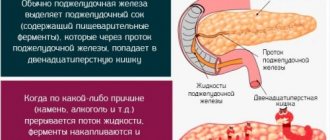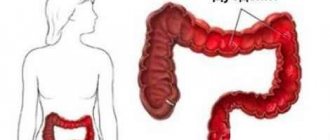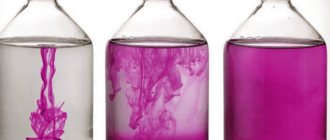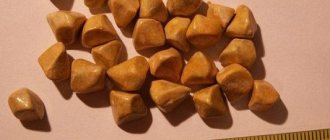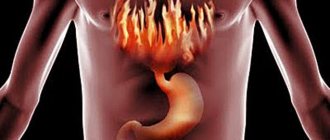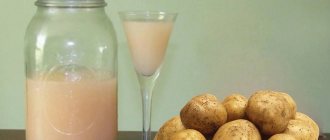Brief description of pancreatitis as a disease
Chronic pancreatitis occurs when progressive damage begins in the tissues of the pancreas due to constant inflammation. Today, this is one of the most common and serious diseases among men 43-50 years old and women 35-50 years old.
Over the past two decades, the percentage of chronic pancreatitis among the adult population has increased several times. Doctors attribute this to thoughtless drinking of alcoholic beverages and low quality nutrition. Alas, now even young children are sometimes diagnosed with this.
The disease progresses over 5-6 years without symptoms. Then he makes himself known with pain in the abdominal area. Continuous inflammation of the pancreas is also signaled by impaired insulin resistance, obesity, general weakness, frequent abdominal upsets, diarrhea and undigested food in the stool.
According to the international classification, the following code for chronic pancreatitis according to ICD 10 is:
- K86.0 Chronic pancreatitis of alcoholic etiology.
- K86.1 Other chronic pancreatitis.
Often patients also experience biliary (or biliary-dependent) pancreatitis. It develops due to existing diseases of the liver, gall bladder and biliary tract.
What is the pancreas and what are its functions?
This organ is located in the abdominal cavity, just below the stomach, next to the spleen.
In Latin this gland is called pancreas. That is why its enzymes are called “pancreatic”. Inflammation of this gland is called “pancreatitis”.
The pancreas has two main functions:
- exocrine - regulates digestion processes;
- endocrine - responsible for the production of insulin and regulation of blood sugar levels.
Check the condition of the pancreas with an ultrasound if the following symptoms bother you from time to time:
- bloating, gastrointestinal dysfunction;
- unpleasant sour taste in the mouth between meals;
- nausea and vomiting after eating fatty and heavy foods;
- girdling pain in the upper abdomen (worsens after junk food or drinking alcoholic beverages).
Types of medicines
When pancreatitis worsens, medications are prescribed that are aimed at quickly relieving pain and reducing inflammation. The main types of drugs prescribed for the treatment of pancreatitis in the acute stage:
- antispasmodics;
- H2 blockers;
- antacids;
- sedatives;
- medications high in calcium;
- choleretic agents
- hormonal drugs.
All patients are required to be prescribed vitamin complexes. The emphasis is on vitamins of groups A, B, K, E, which help restore insufficient concentrations of nutrients in the body and help normalize the process of digestion and the outflow of bile.
In case of severe pain, in order to relieve the unpleasant symptoms of pancreatic disease as quickly as possible, pain-relieving medications, such as No-shpa, are prescribed. Exacerbation of pancreatitis is a serious disease that cannot be cured quickly.
Medicines must be taken regularly, some even for years, to restore the functioning of the pancreas and digestive system. Drug treatment must be combined with diet. Without following the correct diet and nutritional regimen, taking medications will not give positive dynamics.
It is necessary to take hormonal drugs with extreme caution. They are prescribed only by the attending physician, accurately calculating the dosage and duration of use. Improper use of medications can cause the development of side symptoms and aggravate the course of exacerbation of pancreatitis.
Medicines to relieve symptoms
Depending on the intensity of the clinical picture that occurs during the period of exacerbation of chronic pancreatitis, either general painkillers or drugs are prescribed, which, in addition to substances that have an analgesic effect, include antispasmodics - Atropine, Platyfillin, Gastrocepin.
Important information: How is nausea with pancreatitis treated?
In the acute stage of pancreatitis, in addition to antispasmodics, analgesics are prescribed - Pentazocine, Baralgin. If the pain is very severe and prolonged, the patient is prescribed analgesics with narcotic components in the composition - Tramal, Promedol.
The essence of the action of drugs with an analgesic effect is that they relax the pancreatic sphincter, due to which the accumulated enzyme in the organ is released and the intensity of pain decreases. Such tablets should not be taken for a long period.
If pain, nausea and vomiting do not stop after taking antispasmodics or analgesics, the patient is admitted to a hospital inpatient unit, where pain medications are administered intravenously. When vomiting, medications in tablet form do not have time to be absorbed into the gastric mucosa and leave the body along with the vomit.
The effect of anesthetic injections begins 10 minutes after administration of the drug. In case of a sharp exacerbation of pancreatitis, antispasmodics are injected intravenously after severe spasms are relieved, and then medications are prescribed in tablet form.
What contributes to the development of pancreatitis
Most often, no matter how sad it may sound, addiction to alcoholic beverages causes chronic inflammation of the pancreas. In our society, drinking on weekends has become the norm. Going to clubs with copious amounts of alcoholic libations, sitting at home drinking beer - all this has become commonplace. Few people realize that this is banal everyday alcoholism.
Problems with the liver and gallstone disease also often become causes of the rapid development of pancreatitis.
The third “honorable” place should be given to poor nutrition over many years. All organs suffer, but the pancreas is one of the first to take the hit. Is it possible to cure chronic pancreatitis? The answer to this question largely depends on the wishes of the patient himself.
Three stages of disease development
Based on the severity of symptoms, three forms can be distinguished.
- Severe course: due to constant pain, from which medications can no longer help, the patient is forced to undergo treatment in an inpatient setting 4-5 times a year. Due to pancreatic diarrhea, the patient rapidly loses weight and has a pale and emaciated appearance. Almost any food eaten causes nausea and vomiting. More and more complications are being added: diabetes mellitus, decreased insulin resistance, intestinal paresis, cholelithiasis, bile stagnation.
- Moderate severity: the exocrine function of the pancreas is practically absent, stool tests show a large amount of fat and protein. The patient is losing weight and often experiences girdling pain. But after a course of treatment it still remains in long-term remission - about a year. Then the symptoms return, and with each subsequent year the tests get worse.
- Mild course: tests are almost normal, body weight and appearance are like a healthy person. The only symptoms are frequent diarrhea, mild nausea after a rich, fatty meal, and an unpleasant sour taste in the mouth.
Treatment of the disease
How to treat chronic pancreatitis? The treatment program depends on a number of factors, which include the following:
- period of exacerbation or remission;
- predominant clinical symptom;
- state of the external secretion of the pancreas;
- state of the internal secretion of the pancreas (endocrine function).
Many people are interested in the question of whether chronic pancreatitis can be cured. It is not possible to completely suppress chronic inflammation and the subsequent degenerative processes at this level of medical development. However, timely treatment and rational nutrition can slow down the progression of the pathological process as much as possible, which does not lead to a decrease in the patient’s quality of life. So, the treatment program for chronic pancreatitis during an exacerbation is as follows:
- in the first days, cold is prescribed to the upper abdomen, hunger and functional rest to the pancreas;
- then pharmacological correction is carried out - antisecretory (reduces the production of gastric juice, which is a powerful stimulator of gastric secretion), antispasmodic and analgesic drugs are prescribed. To reduce pancreatic activity, it is recommended to use enzyme preparations for replacement purposes.
Diet as a fundamental principle of treatment
Dietary nutrition for chronic pancreatitis occupies one of the main places, especially during the period of remission. It allows you to reduce the load on the pancreas and improve the course of reparative processes in it. As a result, this significantly reduces the likelihood of another relapse of the disease. The diet for chronic pancreatitis is based on the following principles:
- the amount of proteins should be increased, since they are consumed as building material during the repair period (restoration of the pancreas);
- there should be 4-5 meals;
- overeating must be avoided;
- food should be predominantly boiled (it is necessary to avoid fried and smoked foods);
- the amount of fats and easily digestible carbohydrates in the diet is significantly reduced;
- Highly extractive broths are excluded.
In parallel, the patient must stop drinking alcohol, which leads to toxic damage to the pancreas. It is important to adhere to dietary principles in order to exclude another exacerbation of the disease and improve the functional state of the pancreas! To maintain a long period of remission, the patient needs to radically change his lifestyle, giving up alcohol consumption and normalizing his diet. This will restore the damaged pancreas and improve its functioning.
As a rule, the diagnosis of chronic pancreatitis, the symptoms of which will be described below, is made after the patient undergoes an ultrasound of the abdominal organs, where there will be some thickening of the pancreas tissue. This is one of the signs of the inflammatory process. However, ultrasound examination of the pancreas alone is not enough to diagnose this disease.
Alas, chronic pancreatitis, the symptoms of which many doctors consider typical, is not so simple. It should not necessarily be present in persons who have crossed a certain age limit. Correct diagnosis and treatment are complicated by the fact that the causes (except, perhaps, alcoholism) of the appearance of this disease have not yet been fully elucidated. In addition, chronic pancreatitis is subtle and can be completely asymptomatic for a long time. But in medicine there has already been a tendency to consider the disease as a separate type of pathology of the digestive system. And this is the complex of symptoms she has.
Subjective symptoms of chronic pancreatitis
Subjective symptoms are nothing more than the patient’s complaints about what is bothering him, which the doctor must take into account when making a diagnosis. Most often, patients may complain of digestive disorders such as: chronic constipation or diarrhea, pain in the upper abdomen or in the left hypochondrium, bloating. This is what worries almost all patients. Further options are possible. For some, pain begins immediately after eating (especially fatty foods), while for others, ailments are not at all related to meals and can appear at different times. Patients often experience weight loss, loss of strength, decreased appetite, and occasional bitterness in the mouth.
Chronic pancreatitis: objective symptoms
For a patient with such complaints, the doctor should first prescribe a stool test. This is an important step in the diagnosis of this disease, since it is the nature of the excrement that can reflect the quality of the digestive process. Thus, patients with chronic pancreatitis have liquid or mushy stool, usually in large quantities. The lack of enzymes that should break down fats explains the presence of undigested food fragments (for example, meat fibers) in the patient’s stool. Thus, an undoubted symptom of chronic pancreatitis is pancreatic enzyme deficiency.
In addition, the doctor (and the patient himself) may note dryness of the patient’s skin, “stubs” in the corners of the lips, and brittle hair. And the reason for this is hypovitaminosis and anemia (lack of iron), which very often accompany chronic pancreatitis.
Another symptom of the disease is the patient’s painful abdomen above the umbilical fossa, in the left hypochondrium. And an ultrasound of the pancreas, a blood test for its enzymes and glucose will help clarify the diagnosis.
How to treat chronic pancreatitis
Treatment of diagnosed chronic pancreatitis has 5 goals:
1. Adjustment of diet. As soon as the period of exacerbation (in the very first days) of the disease chronic pancreatitis, the symptoms of which are discussed above, begins, the patient is advised to refuse food altogether and drink only mineral waters with alkali (for example, Borjomi). After 2-3 days, porridge, steamed dishes, lean meat and lean boiled fish are gradually introduced into the patient’s diet. During an exacerbation, you should avoid raw fruits and vegetables and milk. And during the period of remission, in order to prevent exacerbation, you should give up fatty, sour, spicy, highly salty and alcohol.
2. Elimination of pain. This is achieved by prescribing antispasmodics and analgesics to the patient: papaverine, drotaverine (no-shpy), analgin, baralgin, diclofenac, etc.
3. Establishing the digestive process and compensating for the lack of pancreatic enzymes. To do this, the doctor prescribes special enzyme preparations (Creon, Mezim, Pancreatin) to the patient and determines the correct dosage. Since this stage is fundamentally important in the treatment of chronic pancreatitis, the patient must strictly follow all the doctor’s recommendations regarding the developed medication regimen. As a rule, the course of treatment with enzyme preparations lasts two to three months, after which the dosage is reduced by half and treatment is continued for another one to two months.
4. Stopping the process of inflammation and regeneration of pancreatic tissue. For this purpose, drugs are used that reduce the acidity of gastric juice. These are ranitidine, an H2 receptor blocker, and omeprazole (or lansoprazole), a proton pump blocker.
A person suffering from chronic pancreatitis will have to come to terms with his illness and adhere to the diet described above constantly, because treatment of the disease takes a very long time. Any gastronomic indulgence, as well as refusal of enzyme preparations prescribed by the doctor, can result in a new exacerbation.
Rarely does anyone think about the functions of the pancreas in the human body. Upon hearing the diagnosis of “chronic pancreatitis,” the patient is usually confused. And where did such a misfortune come from? If the diagnosis was carried out correctly, you will have to change your lifestyle once and for all. Treatment of chronic pancreatitis is long and serious. If you let the disease take its course, it will end in death.
Chronic pancreatitis: symptoms and treatment in adults
People often don't care about their health. Having heard their diagnosis, they are in no hurry to adjust their diet and give up alcohol. Meanwhile, chronic pancreatitis can progress to pancreatic necrosis over several years, and this is already a fatal diagnosis, and the chances of surviving with it are small.
If you discover symptoms of this disease, do not hesitate, consult a doctor. Diagnosis of chronic pancreatitis is simple and easily feasible today. Within a couple of days, doctors will be able to accurately say what exactly the patient is suffering from.
Treatment of chronic pancreatitis is usually carried out inpatiently. An approximate order of events for a patient in the hospital:
- Following a strict diet. The first days after an exacerbation and diagnosis, almost complete fasting is recommended.
- Elimination of pain and spasms - this is where medications come into play.
- Normalization of the digestive process. Informing the patient that he now needs to adhere to a certain diet for the rest of his life and completely eliminate alcoholic beverages from his life.
- Replenishment of enzyme deficiency with the help of fermented preparations.
- If this is still possible, try to restore part of the affected pancreatic tissue.
Pharmacology against pancreatitis
If tests show the presence of infection, antibiotic therapy is carried out for 8-10 days. If the ducts are inflamed, Amoxiclav or Amoxicillin are most often prescribed (the drug is always chosen by the doctor). Also, antibiotics in some cases can facilitate the flow of bile. But sometimes Ursosan is additionally prescribed for this purpose. Such measures help stop the inflammatory process, thereby relieving the pain of chronic pancreatitis. For spasmodic girdling pain, Noshpa or Drotaverine is prescribed.
At the same time, you must follow the nutritional rules for chronic pancreatitis. Otherwise, the course of antibiotics will be completed in vain, and the symptoms will return again.
To reduce acidity levels, Maalox or Almagel are most often prescribed.
To reduce general intoxication of the body during inflammation of the pancreas, modern drugs “Hemodez” and “Ringer” have proven themselves well.
Chronic pancreatitis (ICD 10 code - K 86.0) most often complicates the functioning of the gastrointestinal tract. For normal digestion, the patient is prescribed enzyme preparations “Creon” and “Pancreatin”.
If medications for chronic pancreatitis do not give the expected improvement in the condition, then the patient is prepared for surgery.
Antacids and antibiotics
It is necessary to treat exacerbation of pancreatitis in a comprehensive manner; medications are selected by the doctor depending on the causes of the dysfunction of the pancreas. Antibiotics to relieve an attack of exacerbation of pancreatitis are prescribed in the following cases:
- the presence of pathogenic bacterial microflora;
- rupture of the ducts in the pancreas;
- liver dysfunction, which often occurs along with chronic pancreatitis.
Antibiotics are drugs for emergency relief of symptomatic symptoms, therefore they are administered intravenously. After the attack is relieved, they are prescribed in tablet form.
Treatment of pancreatitis during an exacerbation with antibiotics requires the patient to undergo medical tests. Medicines are selected individually depending on the type of pathogenic microflora, the general condition of the body, and individual characteristics. It is strictly forbidden to independently prolong the use of medications or cancel them without the consent of the attending physician.
Antacids are medications that are necessarily prescribed by the attending physician during an exacerbation of chronic pancreatitis. These drugs are aimed at normalizing the concentration of acid in gastric juice. The tablets included in this drug group neutralize the concentration of pepsin, hydrochloric acid, and bile in the body.
Important information: What vitamins can you take if you have pancreatitis?
The most common antacids are Maalox, Alumag, Gastratcid, Almagel. They give a quick but short-term effect on normalizing the acidity of gastric juice. To prolong their effect, it is necessary to take antacids in combination with enzymes and antienzyme drugs. Treatment is selected individually.
Benefits of enzymes
Enzymes are a group of drugs that are basic in the treatment of exacerbation of chronic pancreatitis. They help normalize the functioning of the pancreas. Only a doctor prescribes medications; independent use can harm the organs of the gastrointestinal tract and significantly aggravate the intensity of the symptomatic picture.
The composition of enzyme preparations includes bile. The most common medications in this group are Festal, Enzym Forte. Contraindications for use: pancreatitis occurring together with concomitant diseases of the digestive system that have a chronic stage; gastritis; ulcer; the presence of stones in the gall bladder.
Enzymes should not be taken for a long time, as this can cause problems with the functioning of the pancreas. The duration and dosage is determined only by the doctor.
Enzymes should be taken during or after meals.
A prerequisite for obtaining a positive therapeutic effect is adherence to a therapeutic diet and eating regimen. The choice of one or another enzyme group drug is based on the results of a medical examination of the patient.
If there is poor passage of the bile ducts, the drug Pankurmen is prescribed, which contains turmeric, which has a good choleretic effect. When an exacerbation of pancreatitis is accompanied by impaired gastric secretion, the patient is prescribed Panzinorm forte. The composition of this drug is dominated by bile and hydrochloric acids.
Nutrition rules for patients
Diet plays a huge role in restoring the well-being of a sick person. Most often, the pancreas begins to function incorrectly if a person abuses fatty, spicy, salty foods and often drinks alcohol. Heavy smokers are also at risk.
Diet and treatment of chronic pancreatitis are closely related. If you continue to eat as before, the disease will develop into pancreatic necrosis (i.e., actual death of the pancreas and poisoning of the body with toxins).
- Give preference to well-ground foods (even if you take digestive enzymes separately). Cream soups, vegetable purees, minced meat (for example, steamed cutlets).
- Stick to fractional meals. The stomach is now simply unable to digest large amounts of food. 7-8 meals per day are optimal. The total volume of one serving is about 200 grams.
- The balance of proteins, fats and carbohydrates should be balanced. Once and for all, forget about meat diets and vegetable fasting days. Every day, your diet should include proteins, healthy fats, and carbohydrates in small quantities.
- The total calorie content of the daily diet is about 1500-2000 kcal for women and 2500-3000 kcal for men. You cannot overeat, this will cause an exacerbation of the disease and pain in the abdominal area.
Treatment of pancreatitis
Severe pain with pancreatitis often accompanies a patient with this disease, and sometimes these pains can even cause painful shock. Unqualified assistance during exacerbation of pancreatitis can provoke the death of the patient, therefore, before the main methods of treatment, we will consider first aid for pancreatitis.
Important! Before using medications, be sure to consult your doctor!
First aid for pancreatitis
What to do if you have an attack of pancreatitis?
1. The patient must be put to bed; you can tuck your knees to your chest, this helps reduce pain. Complete rest and minimal physical activity are required.
2. You need to apply something cold to the epigastric area - a heating pad with cold water, a bottle. Cold also helps reduce pain and will also help slightly relieve inflammation and swelling.
3. To relieve spasms and pain, you can take the following medications: “Drotaverine”, “Maxigan”, “No-shpa”, “Spazmalgon”.
4. Call an ambulance.
5. During the period of exacerbation of pain, it is necessary to completely stop eating, except for drinking plain water - without additives or gas, which will help reduce the production of secretions by the pancreas.
Rest, cold and hunger are the three basic rules of first aid for attacks of pancreatitis.
Basic treatment of pancreatitis
Treatment of pancreatitis begins with a mandatory visit to the doctor and includes:
1. Rest and peace (during attacks); 2. Drug treatment; 2.1. Pain relief; 2.2. Antienzyme therapy; 2.3. Taking pancreatic enzymes; 2.4. Normalization of acid-base balance; 2.5. Vitamin therapy; 2.6. Improving the functioning of the gastrointestinal tract; 2.7. Parenteral nutrition 3. Diet. 4. Surgical treatment (if necessary). 5. Sanatorium treatment.
Treatment of acute pancreatitis is carried out in a hospital.
2. Drug treatment of pancreatitis (medicines for pancreatitis)
Important! Medicines for pancreatitis are prescribed by a doctor individually, based on the diagnosis of this disease. This is due to a wide range of factors and the pathogenesis of pancreatitis, which, if not taken into account, will minimize the chance of full recovery.
2.1. Pain relief (antispasmodics)
To relieve pain from pancreatitis, the doctor usually prescribes:
Antispasmodics: “Drotaverine”, “Duspatalin”, “Maxigan”, “No-shpa”, “Spazmalgon”, “Sparex”, “Phenicaberan”.
M-Anticholinergics: “Atropine”, “Gastotsepin”, “Metapin”, “Chlorosil”.
For persistent pain, H2 blockers are prescribed: Ranitidine, Famotidine.
2.2. Antienzyme therapy
Antienzyme therapy is aimed at stopping the processes that destroy the pancreas.
Antisecretory drugs are aimed at blocking enzymes such as trypsin, trazylol, gordox, contrical, pantrypin and others, as well as inhibiting protein synthesis in the gland, which helps reduce pain, swelling, microcirculatory disorders and other signs of inflammation of the pancreas.
Antisecretory drugs include: cytostatics (“Ribonuclease”, “Ftorafur”, “5-fluorouracil”), “Gordox”, “Kontrikal”, “Pantripin”. Trazylol, Epsilo-aminocaproic acid (E-AKK), Amidopyrine, as well as proton pump blockers (Nexium, Omez, Omeprazole, Rabelok).
It should be noted that proton pump inhibitors (blockers) help reduce the level of hydrochloric acid in the gastrointestinal tract, which also helps relieve pain during pancreatitis.
For the edematous form of pancreatitis, Asparkam is prescribed along with antisecretory drugs.
To suppress the production of hormones by the pancreas, Octreotide may be prescribed in a hospital setting.
2.3. Taking pancreatic enzymes
To reduce the load on the inflamed pancreas, and also if its secretory insufficiency is noticed, pancreatic enzymes are prescribed. These drugs are a complex of the same enzymes that the pancreas produces to digest and assimilate food; they also help break down proteins, fats and carbohydrates. Thus, the activity of the gland when food enters the body is minimal.
Preparations with pancreatic enzymes include: Festal, pancreatin (Biozym, Vigeratin, Gastenorm, Creon, Mezim, Pancreatin, Penzital, Ermital).
These groups of drugs are best taken after meals and washed down with alkaline mineral waters.
Additional intake of pancreatic enzymes also relieves symptoms such as nausea, bloating, upset bowel movements, and rapid weight loss.
2.4. Normalization of acid-base balance (pH)
With pancreatitis, the acid-base balance in the digestive organs changes - to the acidic side. Therefore, for this disease of the pancreas, as well as along with taking histamine blockers and some groups of antispasmodics (anticholinergics), drugs are prescribed that reduce acidity in the stomach and other digestive organs.
Drugs that normalize the acid-base balance (pH) in the gastrointestinal tract: Almagel, Gastal, Maalox, Famotidine, Phosphalugel, Cimetidine.
2.5. Vitamin therapy
In the treatment of chronic pancreatitis, additional vitamins are prescribed - A, E, C, D, K and B vitamins.
In addition, lipoic acid and cocarboxylase are prescribed.
2.6. Improving the functioning of the gastrointestinal tract
In some cases, to stimulate normal activity (motility) of the digestive organs, the doctor may prescribe prokinetics: “Itopride”, “Motilium”, “Cerucal”.
2.7. Parenteral nutrition
In case of severe digestive disorders and poor absorption of food by the intestines, parenteral nutrition is prescribed.
As parenteral nutrition, intravenous drips, the following are usually administered:
- Mixtures of essential amino acids (250-400 ml): “Alveein”, “Alvezin”, “Aminosol”;
- Electrolyte solutions: 10% potassium chloride solution (10-15 ml) and 10% calcium gluconate solution (10 ml).
Diet for pancreatitis
Treatment of acute and chronic pancreatitis is impossible without following a diet. Moreover, the chronic form of the disease requires a person to follow a diet throughout his life.
In case of acute pancreatitis, in the first 2-3 days it is necessary to completely abstain from eating, only drinking plenty of water is allowed - mineral water, rosehip decoction or, in extreme cases, plain water.
What can you eat if you have pancreatitis?
The menu for pancreatitis should contain as much protein and vitamins as possible, and as little fat and carbohydrates as possible.
Among the foods that can be eaten for pancreatitis are:
- First courses: vegetarian soups based on cereals, vegetables and lean meats, possibly with milk.
- Second courses: lean meats (beef, chicken) and fish, chicken egg omelet.
- Cereal products: cereals (rice, oatmeal, semolina, buckwheat and barley), pasta, crackers, day-old bread, vegetable oil (limited).
- Dairy products: fresh slightly sour dairy products (cottage cheese, kefir, yogurt), cheese (lightly salted, not fatty and not spicy), low-fat milk (limited), butter.
- Vegetables and fruits: potatoes, beets, carrots, pumpkin, squash, zucchini, non-acidic varieties of apples.
- Drinks: vegetable and fruit juices, dried fruit compote, rosehip decoction, tea with milk, brine (limited).
- Dessert: honey, jam and chocolate (limited), sweet berry jelly, sugar.
Cooking method: all dishes must be finely chopped, then boiled, baked or steamed.
Meals should be fractional, in small portions, 5-6 times a day.
You should also try not to mix different types of protein, fats and carbohydrates at one meal.
Dishes can only be eaten warm (not higher than 60°C); hot and cold dishes should be excluded.
The energy value of food is 2480 (for acute pancreatitis), 2690 (for chronic) kilocalories per day.
What should you not eat if you have pancreatitis?
If you have pancreatitis, you should not eat fatty, fried, spicy, salty, spicy and smoked foods, fast food, foods containing coarse fiber and other foods that increase the secretion of gastric juice or gas formation. The consumption of alcohol, including low-alcohol drinks, is strictly prohibited.
Among the foods that cannot be eaten are barbecue, mushrooms, chocolate, fatty creams, baked goods, pork, lard, lamb, goose, duck, animal fat, whole eggs, sour cream, pickles, marinades, garlic, onions, sorrel, spinach, radishes, legumes, seasonings, vinegar, margarine, cocoa, coffee, cinnamon, grapes and grape juice, dates, figs, bananas, ice cream.
It is also advisable to avoid drinking milk. Milk can be added to cereals, but such dishes should be minimized in your diet.
Surgical treatment of pancreatitis
Treatment of pancreatitis surgically, i.e. through surgery, usually used for severe or advanced forms of this disease. Typically, the operation is performed using laparoscopy, during which drainage is installed.
After surgery, the patient is prescribed antibacterial therapy and other drugs aimed at stopping inflammatory processes in the pancreas.
Additionally, dehydration therapy and enzyme preparations may be prescribed.
Sanatorium treatment of pancreatitis
It is very useful for chronic pancreatitis to visit specialized resorts and sanatoriums, which are focused on the treatment of diseases of the gastrointestinal tract, at least 1-2 times a year.
One of the types of therapy in sanatoriums is treatment with mineral waters, without gas.
Popular sanatoriums for diseases of the gastrointestinal tract (GIT) are “Zheleznovodsk”, “Kislovodsk”, “Morshin”, “Pyatigorsk”, “Truskavets”.
Approximate daily diet
An excellent breakfast would be oatmeal with water. To make up for the lack of healthy fats, add a teaspoon of olive oil. For drinks, prefer weakly concentrated homemade compotes (you can cook them from fresh frozen berries or use dried fruits).
Snack - one sour apple, a glass of fermented baked milk.
For lunch, be sure to eat protein foods. Light vegetable soup with the addition of slices of boiled chicken fillet. Or a bowl of buckwheat porridge with veal goulash. You cannot fry food, i.e. You can forget about chops, scrambled eggs, and classic cutlets in butter forever.
Another snack is a briquette of low-fat cottage cheese with a spoonful of honey or non-acidic fruit.
It would be ideal to make dinner protein. Steamed fish with herbs (cod, pollock, carp - give preference to low-fat varieties). A vegetable salad seasoned with a tablespoon of olive oil is suitable as a side dish.
Sometimes you can arrange a “stomach holiday” - treat yourself to low-fat ice cream, a milkshake or a kefir smoothie with your favorite fresh berries.
Nutrition for chronic pancreatitis is the key to stable remission.
Folk remedies for pancreatitis
Many patients like to use simple home remedies to treat their illnesses. Elderly people are still confident that herbal infusions can heal almost any disease. Symptoms of chronic pancreatitis and treatment in adults indicate the opposite: starting from the second stage, traditional medicine is powerless.
Here are the most popular ones.
- A decoction of rose hips and pine needles. Dry rose hips (300 g) and 100 grams of green pine needles are poured with a liter of water and brought to a boil. Then mash the berries with a masher until they are as puree as possible, and boil for another half hour. Strain the pulp from pine needles and rose hips, and take the decoction twice a day, half an hour before meals, a glass.
- Mix corn silk, peppermint, calendula and plantain in equal proportions. Pour boiling water over and leave for two hours. The resulting infusion should be taken on an empty stomach, several times a day. Only at the initial stage of inflammation of the pancreas, immediately after the diagnosis of chronic pancreatitis, can such infusions be useful.
- There is an opinion that raw potato juice, mixed half and half with carrot juice, can cure pancreatitis in a couple of weeks. Whether to believe this miraculous recipe is up to you. If you decide to try it, be careful, as raw carrot juice can cause increased pain.
- People advise drinking goat's milk every day on an empty stomach. Allegedly, for many people, after such a breakfast, the symptoms of the disease went away. Goat milk actually has a number of beneficial properties. But scientific studies have not proven the effect of goat milk on the condition of the pancreas.
Many patients are interested in the question of how to cure chronic pancreatitis forever with folk remedies. If it were possible so simply, would people suffer from exacerbation of the disease for many years? Treatment of chronic pancreatitis is not as quick and simple as it might seem at first glance. It happens that the disease returns after a couple of years, and during this time irreversible changes have time to occur.
Drug treatment
In addition to diet, doctors prescribe medications for chronic illness. It should be noted that for this disease, it is necessary to use medications in treatment that will help reduce gastric secretion. As a rule, for this disease, drugs are prescribed that do not absorb antacites and histamine H2 receptor blockers.
Treatment of pancreatitis with Atropine or Trasisol. In this case, the dosage of medications should be at least 100,000 units/day. Doctors can also prescribe Contrikal during an exacerbation; it is prescribed in a dose of 20 thousand or 40 thousand units/day, it all depends on the severity and the general condition of the patient.
For pain, droppers are prescribed at a rate of 50 drops per minute. A 5% solution of glucose and NaСΙ is used as a medicine. Droppers are prescribed in short courses, over 5-10 days.
In the chronic course of the disease, the pressure in the ductal system often increases. This causes the patient to experience heartburn and nausea. Therefore, doctors prescribe medications that help eliminate gastroduodenal motility disorders.
Doctors prescribe metoclopramide to take 10 mg 2 times a day. For pronounced symptoms, one of the drugs is prescribed: Domperidone or Sulpiride - drugs for intramuscular injection. Prescribe 100 mg 3 times a day.
Antispasmodic drugs
Antispasmodic drugs for the treatment of chronic pancreatitis are used to eliminate pain.
A drug from the group of H2 blockers, for example Ranitidine, has proven itself well. Famotidine can also be used in treatment.
Additional remedies that cope with pain syndrome:
- No-shpa.
- Papaverine.
- Platyfillin.
In addition to the treatment described above, enzyme therapy is also prescribed. It includes such drugs as: Trypsin, Lipase.
Please note that if the patient has isolated exocrine pancreatic insufficiency, then doctors prescribe more serious drugs, for example: Creon. The main component of the medicine is pancreatin - a strong component. Therefore, before using Creon, you must consult a doctor to avoid serious health complications.
For pancreatitis, treatment must be comprehensive, so replacement therapy is prescribed in addition to the above-described regimen. Such therapy is necessary in order to relieve the pancreas in a short period of time.
Also read: Acute pancreatitis in adults: treatment drugs
Prescribed:
- Mezim.
- Festal.
- Digestal.
The first medicine helps to quickly compensate for the deficiency of pancreatic enzymes. Mezim is prescribed in short courses at a dosage of 1-2 tablets per day.
Before using the drug, carefully read the instructions. Since Mezim contains potent components that can cause a strong allergic reaction.
Festal is a drug in the form of a pill that has a wide spectrum of action, namely lipolytic, proteolytic and choleretic. Dosage - according to the recommendations of the attending physician, but, as a rule, 1-2 tablets are prescribed, divided into 3 doses.
Digestal is a potent drug, available in the form of dragees. Degistal can be prescribed during pregnancy in the absence of direct contraindications. Prescribes 1-2 tablets during meals.
If the dosage is incorrectly selected, allergic reactions such as urticaria, heartburn, and diarrhea may occur.
If Digestal does not bring a positive effect, the doctor prescribes an analogue. For example: Panolez, Ferestal or Evenzym.
Spa treatment
In addition to drug therapy, doctors can recommend a sanatorium-resort vacation to the patient.
Treatment is carried out only at those resorts that have a gastroenterological profile. For example: Essentuki, Morshyn or Jermuk.
Surgery
The indication for surgical treatment is not only pronounced pain, but also frequent relapses of the disease, especially in the absence of a positive effect after drug therapy.
The basic principle of surgical intervention is aimed at creating optimal outflow of pancreatic juice.
There are several methods of surgical treatment.
- The first method is aimed at freeing the pancreas and parapancreatic tissue from infected pancreatic necrosis.
- The second method is aimed at eliminating ductal hypertension. In this case, doctors ensure a good outflow of pancreatic secretions directly into the intestinal lumen.
Traditional methods of treatment
Drug therapy and surgical procedures can be combined with traditional methods of treatment.
Important! You should consult your doctor before preparing any recipe to avoid serious health complications.
Sprouted oats help with this disease.
In order to cook oats, you need to thoroughly wash the grains. Then soak them and place them in a dark place for 2 days. Also read: What are the best pills for the treatment of pancreatitis?
On the 3rd day, grind the oats and then dilute with water. Meanwhile, place a saucepan of water over low heat and pour in the ground grains and boil for 2 minutes. Before taking the decoction, you need to strain it. Drink in small portions.
Chief gastroenterologist of the Russian Federation: “PANCREATITIS does not go away?! A simple treatment method has already healed hundreds of patients at home! To cure the pancreas forever you need...” Read more »
For pain, you can use calendula tincture. You can prepare it at home or buy a ready-made infusion at the pharmacy. If you are allergic to calendula, you can replace it with barberry.
To prepare a decoction of barberry you will need 100 grams of crushed fruit and 1 liter of vodka. Place all ingredients in a container and leave for 7 days. Then strain and take 1 teaspoon.
Please note that this recipe is not intended for everyday use. Preparation of the medicine should be taken exclusively for pain syndrome.
Doctors often prescribe calamus root.
To prepare it, you need 1 tablespoon of grated root and boiling water. Add 1 tablespoon of calamus to 250 ml of water, heat over low heat and let cool. Before use, strain through a sterile gauze cloth, take 1 teaspoon before meals.
If the patient has an allergic reaction to the composition of the prescription, then it cannot be used in treatment.
Remember, before treating pancreatitis, you must consult a doctor. Self-medication leads to serious consequences.
Is it possible to cure chronic pancreatitis?
It is definitely difficult to answer this question. A lot depends on the stage of the disease and on the individual characteristics of the body and general health. What matters is whether the person himself is ready to make efforts to recover.
Starting from the second stage, it is impossible to get rid of this disease. If degenerative processes have already begun in the pancreas, they can only be slowed down.
Patients who have permanently given up alcohol in any quantity and have completely revised their diet and lifestyle can forget about relapses of pancreatitis for many years and even decades. But returning to the previous lifestyle will invariably lead to an exacerbation of the condition.
Surgical methods of treatment
In some cases, surgery cannot be avoided: it is a matter of patient survival. If chronic pancreatitis is not treated properly, the case often ends with surgical intervention.
The main task of the surgeon is to eliminate necrotic foci in the pancreas. If there are cysts and abscesses, remove them completely. Drainage of the pancreas is done to relieve pressure. Also, pus and fluid are released through the drainage, which can cause an infectious process if they have nowhere to be released.
Often surgeons have to make anastomoses between the pancreas and intestines. The prognosis for the patient's life expectancy after such operations is unfavorable.
Diagnostic search
Diagnosis of chronic pancreatitis is based not only on a thorough assessment of clinical symptoms, but also on additional research methods. The most commonly used are the following:
- assessment of the biochemical composition of pancreatic juice;
- assessment of the activity of amylase, which is produced in the pancreas;
- carrying out a coprogram, which reveals undigested food residues;
- X-ray of the pancreas, which reveals only gross anatomical changes in the organ;
- Ultrasound is currently the most popular, as it is a non-invasive and highly informative diagnostic method.
